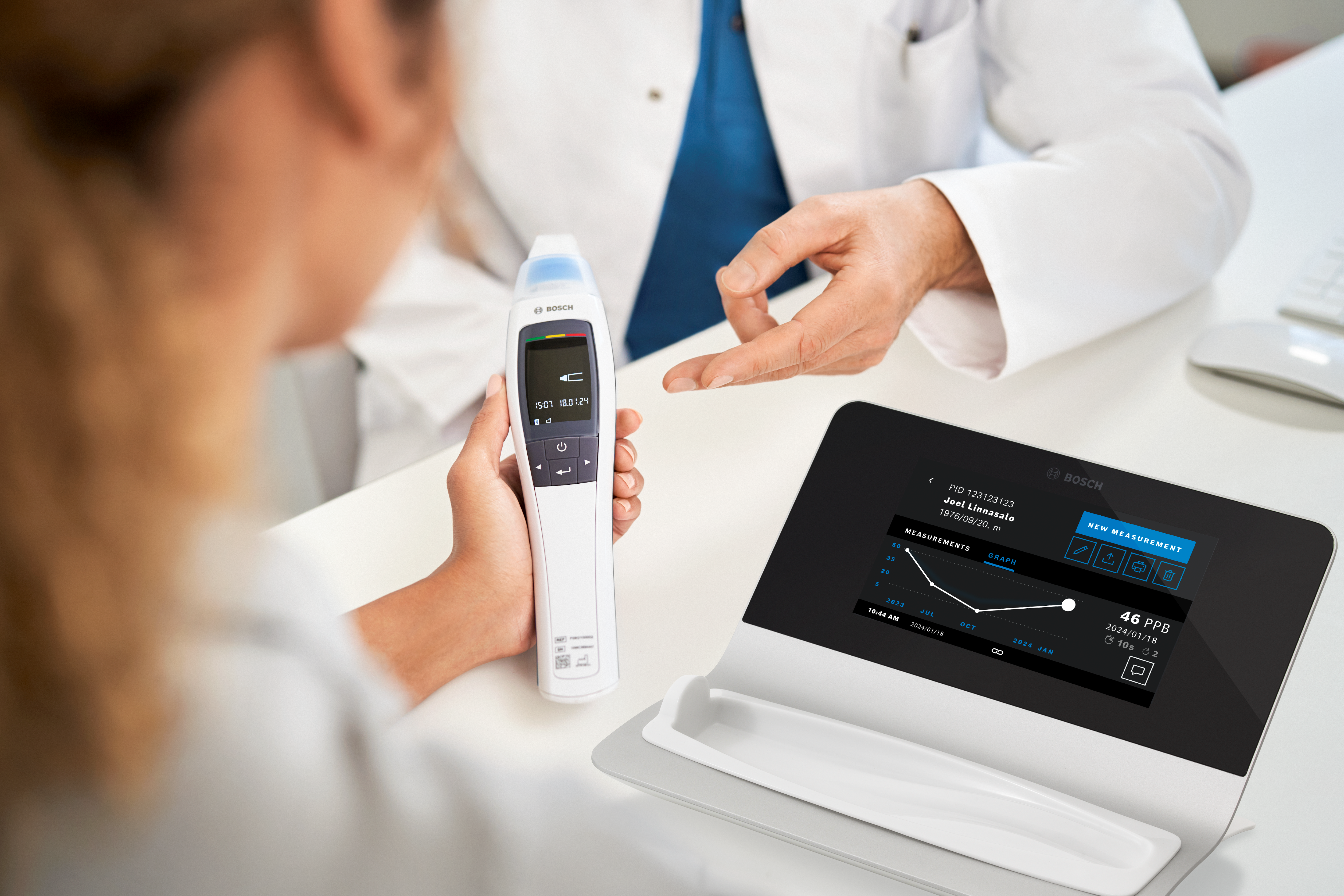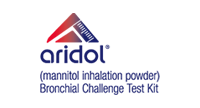Fractional Exhaled Nitric Oxide (FeNO) in Clinical Practice

Fractional Exhaled Nitric Oxide (FeNO) testing has emerged as a valuable tool in both the diagnosis and management of asthma. It is a non-invasive, quick, and easy test that measures the concentration of nitric oxide in exhaled breath. This helps provide insights into airway inflammation, more specifically T2 allergic inflammation. This blog will explore the brief history of FeNO testing and focus on the growing applications in clinical practice.
FeNO has become a clinically useful objective measure of inflammation in a relatively short amount of time. By comparison, spirometry has had, roughly, a 160-year head start! Of course, they measure two different things, I only mention this comparison in the context of ‘all good things take time.’ Although, it has only been available since the early 2000’s, its clinical utility continues to grow alongside advancements in diagnosis and treatment of asthma.
One of the first comprehensive documents that addressed FeNO testing was the 2005 ATS Workshop Proceedings. This document was largely focused on the measurement of exhaled nitric oxide more so than the clinical applications. It discussed aspects such as sensor technology, number of required attempts, inhalation/exhalation phases, calibration gases, offline and flow-controlled breath measurements. It also introduced several concepts that are still in practice today. The document reported the following: FeNO rose in patients with asthma, FeNO fell after the introduction of steroids, FeNO rose once medication was stopped, FeNO correlated with eosinophilic inflammation, and FeNO rose with exacerbations.
It was during this time that FeNO became increasingly utilized in clinical research. Not all studies resulted in positive findings as there was still a lot to learn in terms of how to apply the potential clinical applications and how best to prove their efficacy.
Roughly seven years later the 2011 ATS Clinical Practice Guidelines were published and became the blueprint for FeNO utilization into the next decade. Unlike the 2005 document, this publication was based predominantly on the clinical utility of FeNO testing and not the measurement itself. It concluded that four core concepts had merit in the diagnosis and management of asthma. They reported that FeNO detected eosinophilic airway inflammation, aided in determining the likelihood of corticosteroid responsiveness, aided in the monitoring of airway inflammation to determine the potential need for corticosteroids and the unmasking of otherwise unsuspected non-adherence to corticosteroid therapy. These core conclusions on the clinical benefits of assessing FeNO still hold true today.
The 2011 document also took a step forward by introducing concepts into interpretation of FeNO values, explored normal vs relevant cut points and potential additional situations in which FeNO could be of value. Finally, it addressed aspects associated with FeNO testing. Considerations and limitations (what objective test don’t have these) such as, environmental factors, cost, and accessibility were discussed. It also emphasized that FeNO testing was not a stand-alone test, and no one should treat based on one FeNO value alone. FeNO testing should be used in conjunction with other diagnostic methods, such as spirometry and clinical evaluation, for a comprehensive assessment. If anyone tells you differently, on any individual test in the diagnosis and/or management of asthma, I would proceed with caution!
Since the 2011 publication FeNO data seems to be abundant. It’s popularity in clinical research has only grown and the number of providers investing in the technology has increased steadily over the past several years. Although, the clinical value of FeNO testing can vary, it appears for the most part, to have settled on roughly four main areas across the diagnosis and management of asthma. (1) It gives an additional objective measure to aid in the diagnosis of asthma. (2) It allows for differentiation in types of asthma by identifying those with high T2 allergic inflammation. (3) It helps identify a patient’s likelihood of corticosteroid responsiveness. (4) It aids in optimization of corticosteroid treatment, which can help reduce potential exacerbations.
In addition to these clinical values, the introduction of biologic therapy in asthma has created an additional benefit to the assessment of FeNO. As these medications target specific inflammatory pathways an increase in the ‘need for’ and ‘ability to’ assess these mechanistic changes has risen.
This leads to where we stand with FeNO in 2024. A quick search of current guidelines show that FeNO plays a role in several diagnostic/management algorithms globally. It appears that FeNO assessment will play a valuable role in respiratory disease for years to come.
In a world where personalized medicine and shared decision-making is becoming increasingly popular, I can’t think of many reasons as to why FeNO would not fit into that equation. FeNO testing will likely play an increasingly significant role in respiratory medicine, improving patient outcomes and quality of life for years to come.
In my opinion, the clinical value of FeNO will continue to evolve as more research is published and therapeutic offerings grow. The only question is what other objective markers will be discovered in the coming years to advance science even further in the diagnosis and management of respiratory disease.
- ATS/ERS Recommendations for Standardized Procedures for the Online and Offline measurement of Exhaled Lower Respiratory Nitric Oxide and Nasal Nitric Oxide. Am J Respir Crit Care Med Vol 171. pp 912–930, 2005
- R. Dweik, P. Boggs, et al. (2011) American Thoracic Society Documents. An Official ATS Clinical Practice Guideline: Interpretation of Exhaled Nitric Oxide Levels (FENO) for Clinical Applications.
- S. Khatri, J. Iaccarino, et al. (2021) American Thoracic Society Documents. An Official ATS Clinical Practice Guideline: Use of Fractional Exhaled Nitric Oxide to Guide the Treatment of Asthma.
- A. Smith, J. Cowan, et al. Use of exhaled nitric oxide measurements to guide treatment in chronic asthma. N Engl J Med. 2005 May 26;352(21):2163-73.
- J. Syk, A. Malinovschi, et al. Anti-inflammatory treatment of atopic asthma guided by exhaled nitric oxide: a randomized, controlled trial. J Allergy Clin Immunol Pract. 2013 Nov-Dec;1(6):639-48.
Author: Ryan Burton, MS, RPFT








